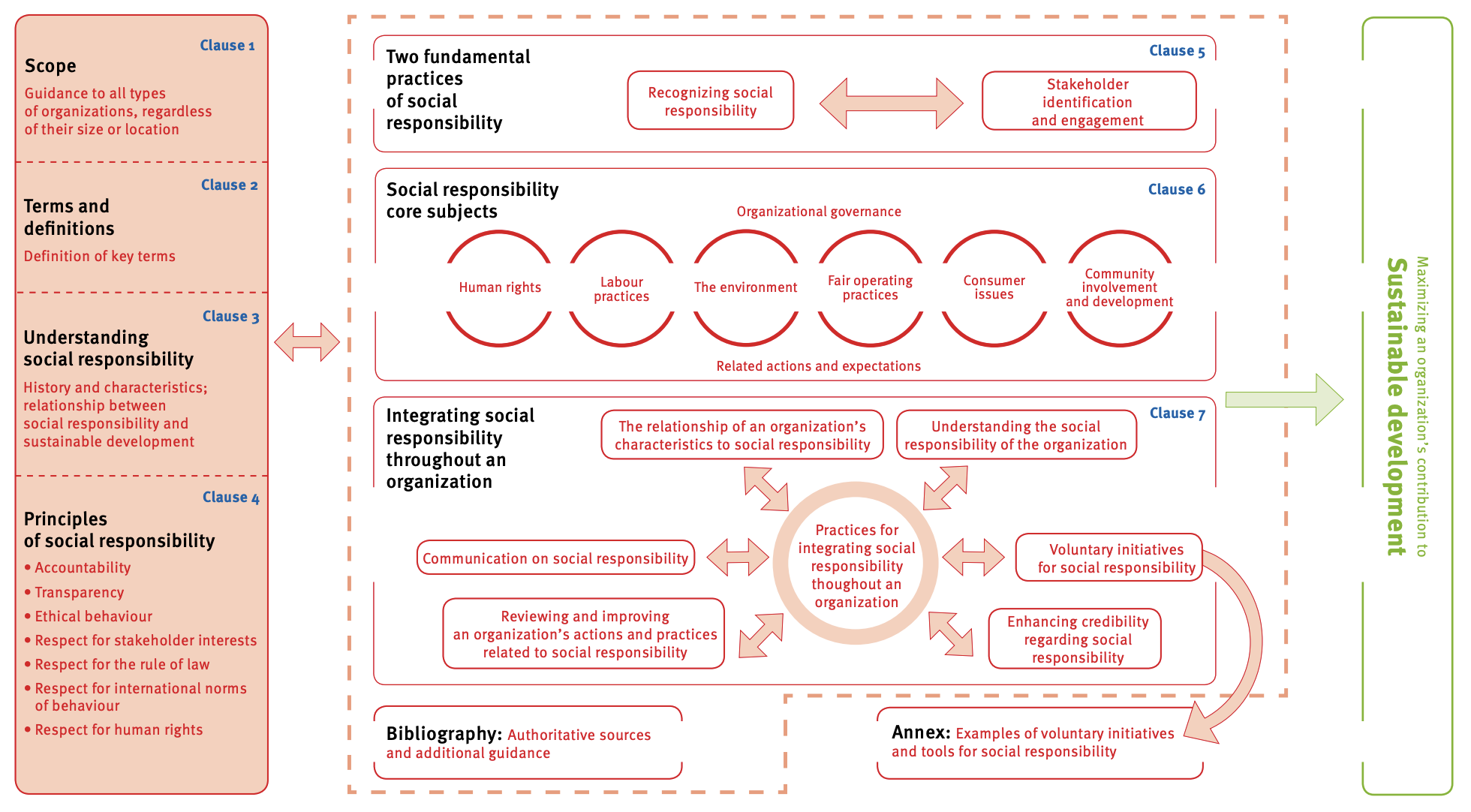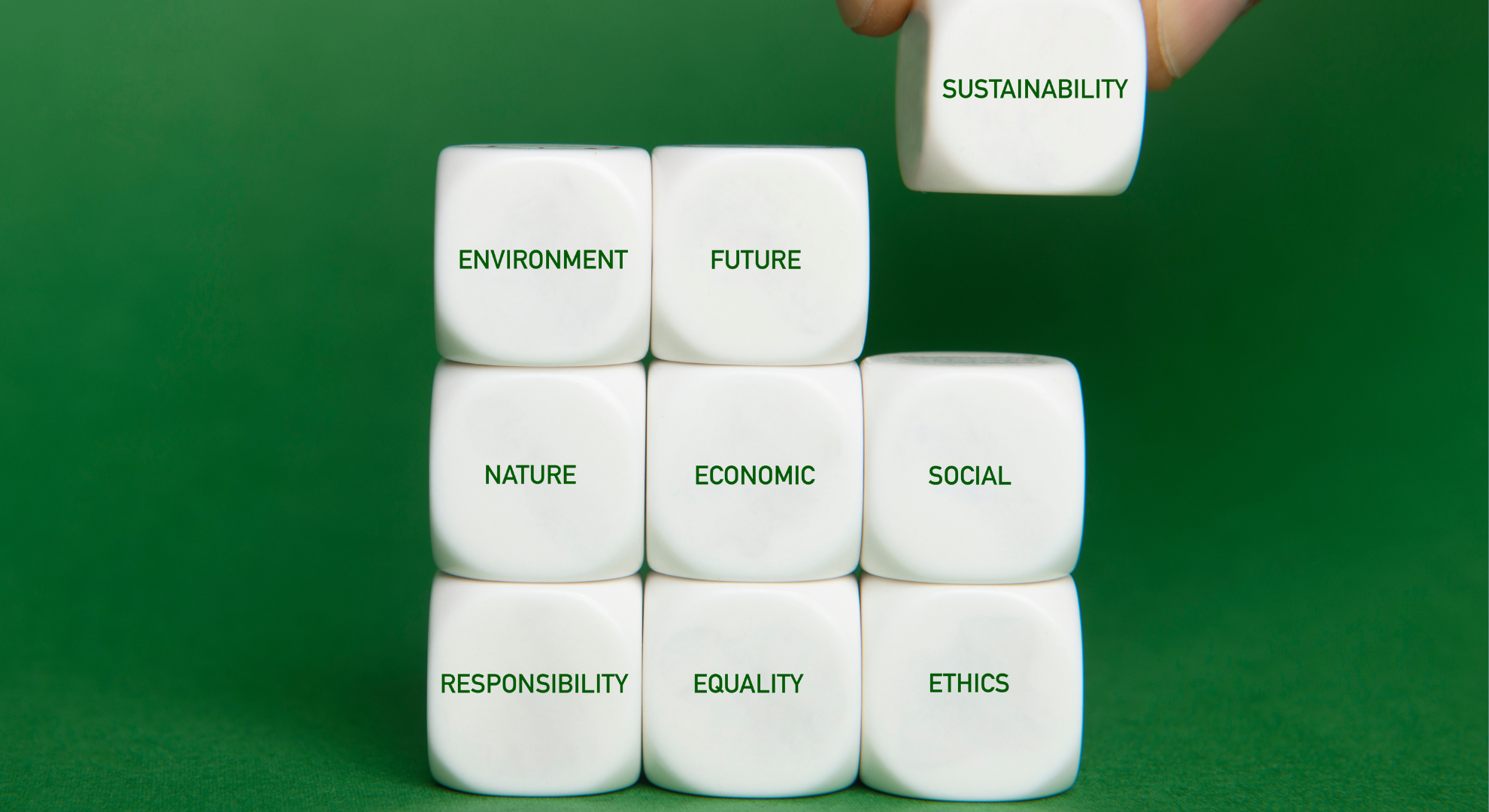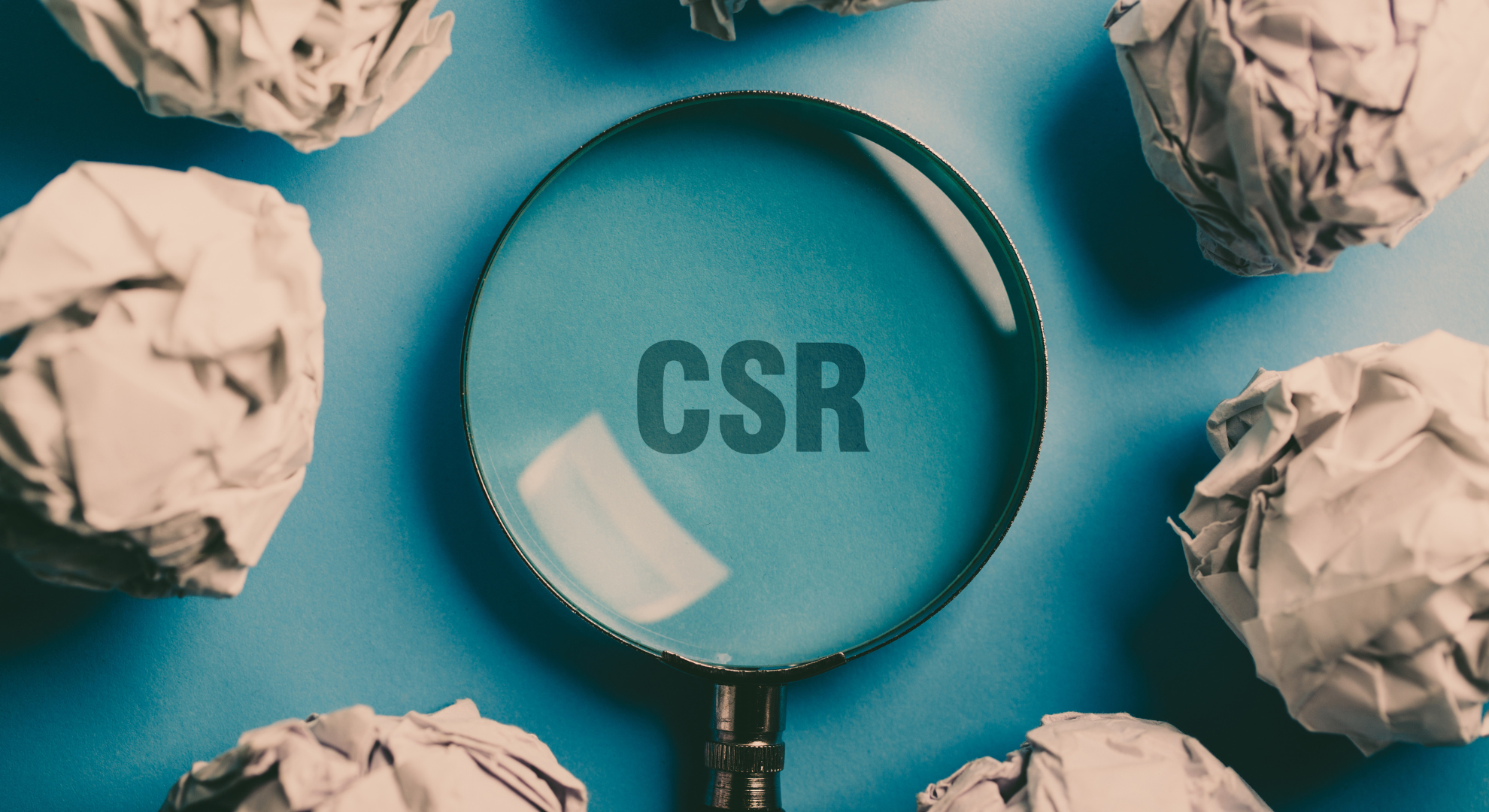ISO 26000 is an international standard that aims to provide guidance on how companies can be socially responsible. It covers a wide range of issues, from labor rights to environmental responsibility.
The standard is designed for companies that want to implement social responsibility practices in their own operations and within their supply chain.
What is ISO 26000?
The ISO 26000: Guidance on Social Responsibility is a standard for social responsibility published by the International Organization for Standardization (ISO).
It defines social responsibility as “ the responsibility of an organization for the impacts of its decisions and activities on society and the environment through transparent and ethical behavior that:
- Contributes to sustainable development, including the health and welfare of society
- Takes into account the expectations of stakeholders
- Complies with applicable law and is consistent with international norms of behavior
- Is integrated throughout the organization and practiced in its relationships.”
What is ISO 26000 purpose?
The ISO 26000 standard outlines the principles and guidelines of the concept of social responsibility.
The standard aims to help organizations—from companies to NGOs, cooperatives, unions, etc.—operate in a socially responsible way and integrate socially responsible behavior into their organizational culture.
This means that organizations are aware of how their actions and decisions impact people and the environment around them, and act accordingly.
ISO 26000 principles
Social responsibility values
ISO 26000 outlines key values, which are viewed as the roots of socially responsible behavior. As part of their approach to responsibility, companies will make sure to integrate those values within their DNA and in every decision they make.
- Accountability: management takes responsibility for the social and environmental impacts of its operations, supply chain, products/services, and behavior.
- Transparency: the organization shares information about social and environmental performance with all stakeholders.
- Ethical behavior: the organization shows respect for human rights and ensures that its workforce operates in a safe environment. It also ensures that it is not complicit in human rights abuses of others, such as forced or slave labor, by business partners or suppliers.
- Respect for stakeholder interests: the organization shows consideration for the interests and expectations of all stakeholders and manages any negative impacts on their legitimate interests.
- Respect for the rule of law: the organization works within the local and national laws of each country in which it operates.
- Respect for international norms of behavior: the organization operates with integrity and transparency beyond national boundaries.
- Respect for human rights: the organization ensures that it is not complicit in human rights abuses of others, such as forced or slave labor, by business partners or suppliers.
The 7 core subjects
ISO 26000 gives 7 core subjects to work on, related to the organizations’ operations.
The standard insists on the holistic aspect of a social responsibility approach: each of the 7 subjects must be understood as being a constituent element of a coherent whole.

Source: https://www.iso.org
The subjects are then further divided into several subsequent issues, which explain the guidelines that companies are asked to follow. Companies will identify the relevant and priority issues for them.
1/ Organizational governance
Decisions are to be made in consideration of the expectations of society.
Accountability, transparency, ethics, and stakeholders should be factors in the organization’s decision-making process.
2/ Human rights
All humans have the right to fair treatment and the elimination of discrimination, torture, and exploitation.
Issues related:
- Due diligence
- Human rights risk situations
- Avoidance of complicity
- Resolving grievances
- Discrimination and vulnerable groups
- Civil and political rights
- Economic, social, and cultural rights
- Fundamental principles and rights at work
3/ Labor practices
Those working on behalf of the organization are not a commodity. The goal is to prevent unfair competition based on exploitation and abuse.
Issues related:
- Employment and employment relationships
- Conditions of work and social protection
- Social dialogue
- Health and safety at work
- Human development and training in the workplace
4/ The environment
The organization has a responsibility to reduce and eliminate unsustainable volumes and patterns of production and consumption and to ensure that resource consumption per person becomes sustainable.
Issues related:
- Prevention of pollution
- Sustainable resource use
- Climate change mitigation and adaptation
- Protection of the environment, biodiversity, and restoration of natural habitats
5/ Fair operating practices
Building systems of fair competition, preventing corruption, encouraging fair competition, and promoting the reliability of fair business practices help to build sustainable social systems.
Issues related:
- Anti-corruption
- Responsible political involvement
- Fair competition
- Promoting social responsibility in the value chain
- Respect for property rights
6/ Consumer issues
The promotion of fair, sustainable, and equitable economic and social development concerning consumer health, safety, and access is the organization’s responsibility.
Issues related:
- Fair marketing, factual, and unbiased information and fair contractual practices
- Protecting consumers' health and safety
- Sustainable consumption
- Consumer service, support, and complaint and dispute resolution
- Consumer data protection and privacy
- Access to essential services
- Education and awareness
7/ Community involvement and development
The organization should be involved with creating sustainable social structures where increasing levels of education and well-being can exist.
Issues related:
- Community involvement
- Education and culture
- Employment creation and skills development
- Technology development and access
- Wealth and income creation
- Health
- Social investment
Who is ISO 26000 for?
Overview of the different types of organizations using ISO 26000
Organizations in the private, public, and nonprofit sectors, whether large or small, and whether operating in developed or developing countries, use ISO 26000. All of the core subjects of social responsibility are relevant in some way to every organization.
ISO 26000 can be used for example by:
- large multinational corporations
- small and medium-sized enterprises
- the public sector (hospitals, schools or others)
- foundations, charities and NGOs
- extractive industries, such as mining and fossil fuel companies
- service and financial industries (banks, IT, insurance)
- municipal governments
- farmers and agribusiness
- consultancies
Because ISO 26000 offers an operational framework and a practical, pragmatic methodological approach, it can be used by all in any scope: government level, organization level, site level, product/service level and even project/program level.
How does ISO 26000 stand out from other standards and frameworks?
As a voluntary international standard that has emerged from an international consensus, ISO 26000 stands out from others for several reasons:
- It is designed to work in all organizational and cultural contexts – in any country or region
- It is flexible and the user decides how to use it
- It was internationally negotiated through ISO’s consensus method, using a multi-stakeholder approach, and balance to reflect global diversity.
- It incorporates the real-life experiences of its many contributors, and at the same time builds on international norms and agreements related to Social Responsibility
ISO 26000 is one of the most comprehensive and concise guides of what an organization should do to contribute to sustainable development.
It constitutes a valuable tool for the implementation of the United Nations’ Agenda 2030 and the Sustainable Development Goals.
Benefits for using ISO 26000 for for-profit companies
Using ISO 26000 helps companies manage and reduce risks, and identify new opportunities. It is a great framework to start the sustainability journey.
Increasing social responsibility contributes to a “virtuous cycle” where each action strengthens the company and encourages sustainable development among all stakeholders.
Implementing the policies and guidelines outlined in ISO 26000 provides companies with:
- A better reputation, leading to economic benefits on a long term
- Competitive advantage by standing out as the better option among competitors
- An increased ability to attract and retain workers as well as customers and stakeholders
- Upkeep of employee morale, commitment, and productivity
- A favorable public perception with investors, owners, donors, and financial interests
- Improved external relationships with other companies, media and community
How to use ISO 26000 standard?
Overview and timeline

Source: https://www.iso.org
ISO 26000 is open source, available to anyone to use and is customizable to fit everyone’s context and needs.
It is not mandatory for companies to buy the official ISO 26000 publication to implement the standard’s guidelines. They can use all resources available to learn about and understand it (online information, books etc.).
ISO 26000 is designed to work in all organizational and cultural contexts, in any country or region. On the operational side, there are no certification or specific requirements, as well as no particular timeline.
Organizations can use the standard’s suggestions for implementing a social responsibility policy as they like and in the timeline, they decide.
Implementation
The steps for implementing a social responsibility policy following ISO 26000 guidance may vary depending on the strategy and objectives defined by companies.
However, the 8 steps below provide an idea of what the process generally looks like:
1. Fully understand the ISO 26000 standard and framework
Companies can use the many resources available online to train managers and employees to ensure that socially responsible behaviors are implemented throughout the organization and integrated into the day-to-day business.
2. Carry out a diagnostic of the current picture
Companies will:
- Explore what social responsibility means to them
- Evaluate their situation for each of the ISO 26000 seven core subjects, identifying significant issues
- Define the importance of each core subject for their business and their long-term vision and strategy
3. Identify the relevant issues
The 7 core subjects contain 37 issues in total.
Not all of the 37 specific issues will be relevant to every company. For each issue, the standard provides appropriate guidelines and implementation strategies for companies to self-assess their current status and set achievable goals for improvement.
4. Identify and engage the stakeholders
ISO 26000 defines a “stakeholder” as “an individual or group that has an interest in any decision or activity of an organization.”
Stakeholder categories include workers, clients, purchasers, consumers, owners, investors, government officials, community residents, and suppliers.
Companies must have two-way discussions with them about how they can both best work together.
It can be the trickiest part of the process so it’s important to make sure:
- not to attempt to engage all stakeholders on all issues at the beginning
- to prioritize core subjects and related stakeholders
- to focus on areas where companies and their stakeholders can most realistically move forward together within the limits of each entity's resources
5. Improvement plans
Based on the current picture diagnostic, companies will:
- Identify current weaknesses and the causes behind them
- Identify resources needed to overcome the weaknesses: time, money, partners, etc.
- Develop a timeline and action plan to bridge the gaps
- Always take into account the impacts of the considered changes
6. Public reporting
The standard urges that, at appropriate intervals, users report on their performance on social responsibility to affected stakeholders.
The standard suggests that the report should include:
- honestly and accurately description of the current situation
- information about objectives and performance on the core subjects and relevant issues of social responsibility
- notification on how and when stakeholders have been involved in the reporting
- a fair and complete picture of performance, including achievements and shortfalls, and how the latter will be addressed
This report itself is considered as an act of social responsibility.
Such a CSR report can also take into account other CSR reporting standards and frameworks.
For instance, the Global Reporting Initiative (GRI), a non-governmental organization created to develop and manage a sustainability reporting framework, provides guidance on how to use the GRI G4 Guidelines in conjunction with the ISO 26000 standard.
7. Communicate with transparency about social responsibility
As part of a continuing dialogue between companies and their ecosystem.
8. Claiming credit
Because ISO 26000 is not for certification purposes, the International Organization for Standardization is extremely sensitive to any uses of the name “ISO 26000” that could imply that an organization or company has been, or needs to be, certified to the standard.
ISO recommends that companies say:
“[Business Name] recognizes ISO 26000 as a reference document that provides guidance on social responsibility.”
and/or
“[Business Name] has used ISO 26000 as a guide to integrate social responsibility into our values and practices.”
Get external help!
At apiday, we use artificial intelligence to help companies monitor their impact and comply with recognized ESG standards
While our team of dedicated ESG consultants can specifically help you understand and implement the ISO 26000 within your organization.
Just give us a call and let apiday do the rest!
Frequently Asked Questions
What is the purpose of ISO 26000?
The ISO 26000 standard provides guidelines for how organizations—including companies, non-governmental organizations, cooperatives, and unions—can operate in a socially responsible way and integrate socially responsible behavior into their organizational culture.
What are the 7 principles of ISO 26000?
The 7 principles of ISO 26000 are: Accountability, Transparency, Ethical behavior, Respect for stakeholder interests, Respect for the rule of law, Respect for international norms of behavior and Respect for human rights.
Who can use ISO 26000?
ISO 26000 is a set of guidelines that organizations in the private, public and nonprofit sectors can use altogether, whether operating in developed or developing countries.
Is ISO 26000 certifiable?
The ISO 26000 standard provides guidance but is not certifiable.
Related articles
Global Reporting Initiative: What It Is and How to Do It
GRI stands for Global Reporting Initiative, and is an international independent standards organization that promotes sustainability reporting through the development of global standards for corporate responsibility, including environmental, social and governance (ESG) reporting...
Impact – What is Impact
The Corporate Sustainability Reporting Directive (CSRD) requires large businesses and SMEs to produce annual reports on their environmental and social impacts.
CSRD – What is CSRD
The Corporate Sustainability Reporting Directive (CSRD) requires large businesses and SMEs to produce annual reports on their environmental and social impacts.
Corporate Sustainability Reporting Directive: All you need to know
The Corporate Sustainability Reporting Directive is an EU regulation that will have a huge impact on how organisations report their environmental, social and governance (ESG) performance...
Sustainability – What is Sustainability
The GRI is an international independent standards organization and currently issues one of the most well-known standards for ESG reporting (GRI Standards).
Discover the latest Sustainability Recent Developments to improve your companies
Sustainability is a concept that evolves due to pressing sustainability challenges, worldwide issues, and its own concept limits. New concepts have emerged to think further and respond better to all the world’s current challenges...
GRI – What is the Global Reporting Initiative
The GRI is an international independent standards organization and currently issues one of the most well-known standards for ESG reporting (GRI Standards).
What is Materiality and Why it matters in business
Materiality is crucial for sustainability reporting because it allows companies to focus on the most important aspects of their sustainability efforts. A company can choose to report on all aspects of its sustainability program, but this would be extremely time-consuming and would probably not be very useful for investors and other stakeholders...
Materiality – What is Materiality
ESG is an acronym for Environmental, Social, and (Corporate) Governance. It refers to the non-financial factors of a corporation’s impact.
EcoVadis – What is EcoVadis rating
Created in 2007, EcoVadis provides a collaborative web-based rating platform for assessing the sustainability performance of organizations worldwide.
Impact-washing – What is Impact-washing
Impact washing can be defined as any marketing claim about a product/good/service/funds triggering a change in the real economy that cannot be supported by evidence.
ISO 26000 – What is ISO 26000
ESG is an acronym for Environmental, Social, and (Corporate) Governance. It refers to the non-financial factors of a corporation’s impact.
B Corp – What is B Corporation certification
ESG is an acronym for Environmental, Social, and (Corporate) Governance. It refers to the non-financial factors of a corporation’s impact.
The concept of impact on social and environmental issues and its implication for companies
Impact measurement is a powerful tool for companies to gauge their impact on social and environmental issues. In this article, we will discuss the concept of impact, its implications for organizations, and how it can be measured...
The most important and recent developments of ESG (Environmental, Social and Governance)
Being a B Corporation is not just about making profits and creating wealth for a company, it is a way of creating a more sustainable future for society! Discover our article about B corps and its benefits here...
The process for an enterprise to get the B corp certification
Becoming a B Corporation is an ambitious undertaking. This article will guide you through the steps required to become a B Corporation…
CSR – What is Corporate Social Responsibility
CSR is centered on the idea that businesses have a responsibility to benefit the society that they exist within—a broader view than the one that says businesses’ only responsibility is to produce economic profit.
What is a B Corporation: what this means and its benefits for companies
Being a B Corporation is not just about making profits and creating wealth for a company, it is a way of creating a more sustainable future for society! Discover our article about B corps and its benefits here...
The guide to EcoVadis certification: frequently asked questions
This guide will take you through the steps of the EcoVadis Certification process, and explain what is involved in becoming a certified business...
What is the meaning of CSR (Corporate social responsibility) and how to adopt it?
A Corporate Social Responsibility strategy refers to an organization's active consideration of the effects its activities have on the environment, employees, customers, and suppliers. Let's look at how your company could adopt such a program...
ESG – What is Environmental, Social and Governance
ESG is an acronym for Environmental, Social, and (Corporate) Governance. It refers to the non-financial factors of a corporation’s impact.
4 reasons companies should adopt CSR, Corporate social responsibility
CSR is all about managing a company’s externalities while creating sustainable value for stakeholders and continuous innovation for the business. Let's break that down and explore why...
Carbon disclosure project reporting: what is it and how does it work?
Read our article about The Carbon Disclosure Project (CDP), an extra-financial questionnaire that collects data on companies’ environmental practices and performance...
What are the differences between Corporate Social Responsibility (CSR) and Environmental Social Governance (ESG)?
These terms are both used to describe an approach for businesses to integrate social and environmental factors into their governance policies, strategies, processes, and programs. Yet, they're not the same. Let's explore their key differences...
Why is ESG (Environmental, Social and Governance) important for a business
ESG (environmental, social and governance) can help businesses make sound decisions, and investors achieve better long-term returns. Let's discover how...













